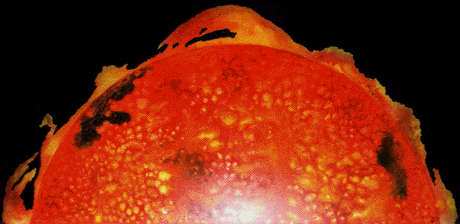| Diameter | 1 391 980 km |
| Sidereal period of the equator rotation | 25,380 days |
| Luminous emittance | 3,88*10^26 watt |
| The visible star value | -26,58^m |
| Spectrum class | G2 V |
| The effective temperature of the surface | 5807 K |
| Age | is near 5 billion years |
| The average distance from the Earth to the Sun | 149 597 870 km |
| Mass | 1,989*10^30 kg |
 The Star called the
Sun.
The Star called the
Sun.